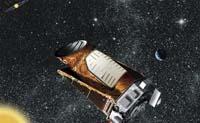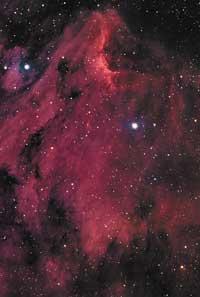Text written in Basque and translated automatically by Elia without any subsequent editing. SEE ORIGINAL
Aliens and bouncer effect
2018/04/23 Galarraga Aiestaran, Ana - Elhuyar Zientzia Iturria: Elhuyar aldizkaria
NASA launches the TESS satellite this week. It is the largest mission in recent times of NASA, whose mission is to study about 20,000 exoplanets. Exoplanets are outer planets of the Solar System and to find them will explore 85% of the sky. Not only that, but NASA has touched an ordeal: it will serve to find an alien life. Or small to distinguish habitable exoplanets that can create or receive life.
This type of exoplanets have already been found, especially thanks to the Kepler telescope. Among those who wait most are those around the star TRAPIST-1. In fact, last year they learned that around the red and cold dwarf star TRAPPIST-1 there are seven planets, mostly rocky, with water, and some, with adequate temperature to live. That is, they are stimulating.
But there is a difference between being habitable and actually living. Thus, many other investigations are focused on finding traces of life. At the moment, however, they have not had good results: it has been proven that all the signals that seemed to be generated by aliens had another origin.
The most famous example is the WOW signal. In 1977 he received an obvious signal of unknown origin through the Big Ear radio telescope. Without further explanation it has been believed that it should be of alien origin. Until last year. Last year it became clear that the signal was created by comet 266P/Christensen when passing close to Earth in August 1977.
It is not easy, therefore, to find clean tracks. Now, in addition, researchers from the University of Cadiz have warned that alien seekers may be exposed to the gorilla effect.
The gorilla effect is the name of a known perceptive experiment. In 1999, researchers Christopher Chabris and Daniel Simons put a video to several volunteers. In the video, some young people were passing a basketball and had to count the passes that the volunteers did. At a certain point, a person dressed in gorilla entered among the youth. However, the volunteers did not see it, as they had all the attention on the ball.
As the researchers of Cadiz have carried out a similar test. Volunteers had to distinguish between natural and artificial structures (such as those seeking extraterrestrial civilizations) in 137 photographs. In one of them he was put in a small gorilla. And as in the 1999 experiment, the volunteers did not realize it. According to the researchers, our neurophysiology is in a certain way, which makes the perception of the environment limited and oriented. In addition, they concluded that the most intuitive volunteers saw the gorilla more easily than rational ones. It seems they will be the best candidates to find aliens.
Published in the newspaper Berria.

eu es fr en ca gl
Gai honi buruzko eduki gehiago
Elhuyarrek garatutako teknologia





